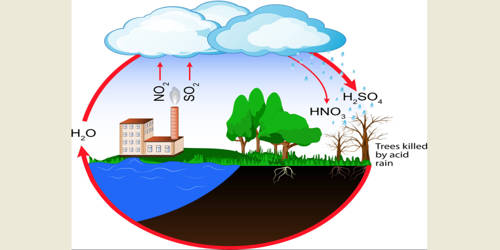There are fifteen issues that scientists warn we need to solve right away, including the mining of lithium from the deep sea, overfishing of species found in deeper waters, and the unforeseen effects of wildfires on land on the ocean. In the next five to ten years, a group of worldwide specialists has identified 15 concerns that they predict will have a substantial influence on marine and coastal biodiversity.
They utilize a method called “horizon scanning” to look for topics that aren’t getting much attention now but are expected to gain significance over the next ten years. Before these challenges have a significant impact on biodiversity, the goal is to increase awareness, stimulate investment in a thorough examination of these issues today, and possibly inspire policy change.
The problems include an “empty” zone near the equator as species migrate away from this warming part of the ocean, the effects of new biodegradable materials on the marine environment, and the consequences of wildfires on coastal ecosystems.
“Marine and coastal ecosystems face a wide range of emerging issues that are poorly recognized or understood, each having the potential to impact biodiversity,” said Dr. James Herbert-Read in the University of Cambridge’s Department of Zoology, joint first author of the paper.
He added: “By highlighting future issues, we’re pointing to where changes must be made today both in monitoring and policy to protect our marine and coastal environments.”
Thirty marine and coastal system professionals from 11 northern and southern hemisphere nations participated in the horizon scan. Their backgrounds ranged from scientists to decision-makers. The findings were released in the journal Nature Ecology and Evolution today.
The exploitation of ocean resources is connected to a number of problems. For instance, deep sea “brine pools” are distinct marine habitats that support a variety of life and have high lithium salt concentrations.
The authors issue a warning that the environment may be at risk due to the increased demand for lithium for batteries used in electric vehicles. They need regulations to guarantee biodiversity is evaluated prior to deep-sea brine pool exploitation.
Marine and coastal ecosystems face a wide range of emerging issues that are poorly recognized or understood, each having the potential to impact biodiversity. By highlighting future issues, we’re pointing to where changes must be made today both in monitoring and policy to protect our marine and coastal environments.
Dr. James Herbert-Read
Although overfishing is an urgent issue, the horizon scan looked ahead to potential future events. The authors speculate that fishing may soon shift to the deeper mesopelagic zone (200 m to 1,000 m), where fish that are unfit for human consumption can be sold to feed fish farms.
“There are areas where we believe immediate changes could prevent huge problems arising over the next decade, such as overfishing in the ocean’s mesopelagic zone,” said Dr. Ann Thornton in the University of Cambridge’s Department of Zoology, joint first author on the paper.
She added: “Curbing this would not only stop overexploitation of these fish stocks but reduce the disruption of carbon cycling in the ocean because these species are an ocean pump that removes carbon from our atmosphere.”
The report also discusses how new biodegradable materials can affect the ocean. Some of these substances are more harmful to aquatic life than conventional plastics.
Herbert-Read said: “Governments are making a push for the use of biodegradable materials but we don’t know what impacts these materials may have on ocean life.”
The authors also express concern about the impact of climate change on fish nutrition. Since cold-water fish species typically synthesize essential fatty acids, as ocean temperatures rise due to climate change, less of these nutrient-rich molecules are created. Both marine life and human health may be impacted by such changes.
Not all of the anticipated effects are detrimental. According to the authors, the advancement of new technologies will help scientists better understand marine species and their distribution. Examples of these technologies include soft robots and improved underwater tracking devices.
The creation of more effective marine protected areas will then be guided by this. But they also stress that before these technologies are widely used, their effects on biodiversity must be studied.
“Our early identification of these issues, and their potential impacts on marine and coastal biodiversity, will support scientists, conservationists, resource managers, policy-makers, and the wider community in addressing the challenges facing marine ecosystems,” said Herbert-Read.
This study concentrated on fewer well-known emergent challenges that may soon have large effects on marine and coastal ecosystems, rather than the numerous well-known issues impacting ocean biodiversity, such as pollution, ocean acidification, and climate change.
Researchers from the Department of Zoology have previously utilized this horizon scanning approach to pinpoint problems that have since gained attention. For instance, a scan conducted in 2009 provided an early warning that microplastics would become a significant issue in marine settings.
The United Nations has designated 2021-2030 as the “UN Decade of Ocean Science for Sustainable Development.”
Additionally, in late 2022, the fifteenth Conference of the Parties (COP) to the United Nations Convention on Biological Diversity will bring an end to discussions regarding a global framework for biodiversity. The purpose is to halt and stop the loss of biodiversity and set objectives for successful outcomes by 2050.
















